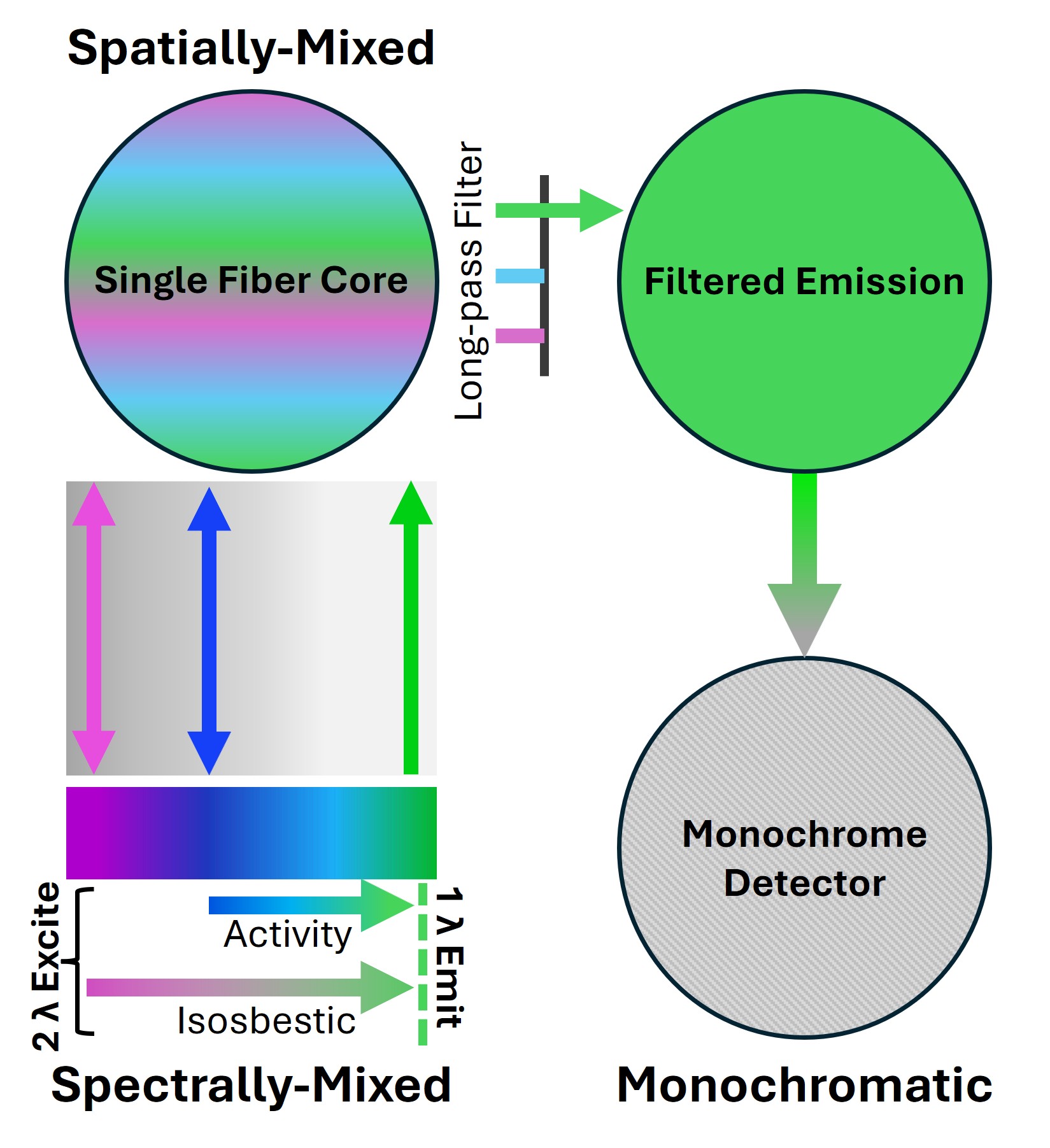
Fiber Photometry Data Preprocessing:
Deinterleaving Signals and Fixing Dropped Frames
Deinterleaving Signals and Fixing Dropped Frames
Fiber photometry experiments typically involve the delivery of 2 or more excitation wavelengths to a target brain region (minimum 1 sensor plus isosbestic). Fluorescence from all wavelengths is collected as one combined signal, through a single optic fiber, and imaged by one monochromatic detector. Adding optics to isolate fluorescence channels would sacrifice flexibility, and colour cameras sacrifice sensitivity. Regardless, isosbestic- and activity-dependent fluorescent signals are measured at the same emission wavelengths, despite different excitation wavelengths. This leads to a basic technical challenge – fluorescent signals must be isolated for analysis, but they cannot be isolated in the spatial or spectral domains. As such, photometry systems isolate signals in the temporal domain. This requires precise temporal control and synchronization of LEDs and light detectors and has critical implications for how missing frames are handled.

In camera-based photometry systems such as those offered by Mightex, LEDs are pulsed on and off in an “interleaved” fashion, with one LED active at a time. The camera frame rate is also adjusted to match LED pulses so that each frame contains only one wavelength. Individual signals are generated by “deinterleaving” the raw recording, meaning that camera frames from each wavelength are separated and concatenated into separate timeseries.

Deinterleaving can be severely disrupted by the occurrence of dropped camera frames, which may happen for a variety of reasons such as packet loss over a bad USB connection. A single dropped frame from a photometry trace is a negligible loss of neural data and need not relegate a whole recording session to the trash can. And yet, one dropped frame can completely derail the deinterleaving procedure. Not only does missing data muddy a photometry trace with large signal dropout artifacts. The missing frames also cause temporal desynchronization between signals and behaviour. Worse still, a missing frame could even cause the deinterleaving procedure to populate each fluorescence time series with data from the from excitation wavelengths!
Dropped camera frames must be accounted for to prevent severe signal artifacts and incorrect deinterleaving. There are several methods which include skipping the dropped frame, duplicating the previous frame, or interpolating the dropped frame. Our recommended method for handling a dropped frame is to interpolate the missing intensity data point via a linear interpolation algorithm. This algorithm generates the missing data point based on the surrounding data points in a manner that approximates the would-be natural signal progression while making minimal assumptions. This cleans the photometry trace of large dropout artifacts, keeps everything in sync, and introduces only miniscule artificiality to the signal.
Of course you wouldn’t want to use a photometry trace where significant portions were filled by an interpolation algorithm. Fortunately, data is rarely lost with Mightex’s high-speed USB connections and cameras with on board memory. But in cases of a great recording marred by isolated cases of frame dropping, interpolation is a good method to perform some minor cleanup of the signal and ensure that deinterleaving is performed correctly.
Gavin Scott, PhD Applications Specialist at Mightex